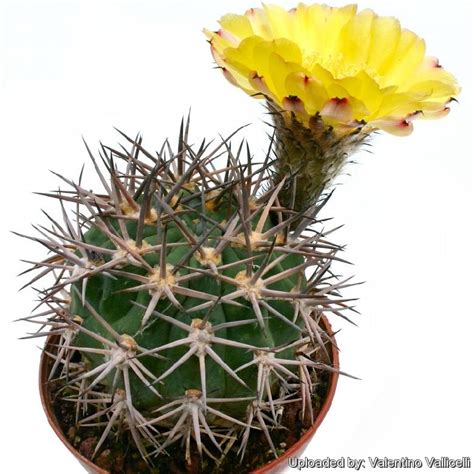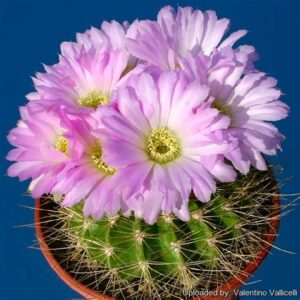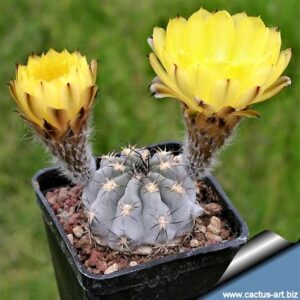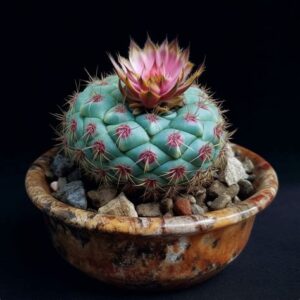Acanthocalycium brevispinum, known for its diminutive stature and charmingly spiny appearance, is a fascinating subject not just for seasoned cactus collectors but also for casual enthusiasts. This article delves into the nuances of caring for this adorable cactus while unveiling the deeper allure that has captivated many. Its vibrant blooms, challenging care requirements, and the sheer elegance of its form and structure beckon attention. Understanding how to cultivate this plant properly enriches the experience of ownership, allowing one to appreciate the subtleties of its growth and beauty.
Originating from the arid regions of South America, particularly Argentina, Acanthocalycium brevispinum stands out not only for its ornamental values but also for its unique adaptations to harsh environments. These qualities make it an intriguing subject for exploration and discussion, as it compels caretakers to engage with its natural inclinations and preferences. An examination of its natural habitat sheds light on effective care practices and fosters a deeper understanding of this captivating species.
The allure of Acanthocalycium brevispinum is not merely aesthetic; it also ignites curiosity about the evolutionary mechanisms that have allowed such a plant to thrive in desolate settings. As we unravel the conditions necessary for its cultivation, we also embark on a journey of discovery, appreciating the marvels of adaptation in the plant kingdom.
With these insights in mind, let us explore the primary aspects of Acanthocalycium brevispinum cultivation, including light and temperature needs, watering practices, soil types, repotting techniques, fertilization, and pest management.
Understanding Light and Temperature: The Essentials for Growth
Acanthocalycium brevispinum is a sun-worshiping entity preferring bright, direct sunlight to thrive. Ideally, it requires about six hours of full sun exposure each day. When placed in partially shaded environments, the plant may exhibit elongated growth patterns or etiolation, which diminishes its compact appearance and detracts from its visual charm. Understanding the significance of light exposure is a fundamental aspect of successful cultivation.
Temperature regulation is equally important. This cactus exhibits a tolerance for fluctuations, thriving in temperatures ranging from 50°F to 100°F (10°C to 38°C). However, as a native to warmer locales, it performs optimally within the range of 70°F to 90°F (21°C to 32°C). It’s crucial to protect it from frost or cold drafts, as prolonged exposure to temperatures below 30°F (-1°C) can lead to irreparable damage or death. The juxtaposition of warmth and light is a critical factor that warrants careful consideration when nurturing this plant.
Watering Wisdom: Striking the Right Balance
One of the most common challenges aficionados face when caring for Acanthocalycium brevispinum lies in its watering regimen. Overwatering is the most common cause of demise among cacti, and this species is no exception. It thrives on a semi-arid watering cycle which mimics its natural environment. During the active growing season, typically from spring to early autumn, a thorough watering every two to three weeks is advisable, allowing the soil to dry out completely between waterings. This cyclical approach ensures the roots remain oxygenated while preventing rot.
In the dormant winter months, the frequency of watering should be drastically reduced to once a month or even less. The cooler, darker conditions prompt the plant to conserve resources, which necessitates less moisture intake. Observing the appearance and texture of the cactus can offer valuable insight into its hydration status. A healthy cactus will exhibit firm, plump skin, while a dehydrated specimen may appear shriveled and dull.
Choosing the Right Soil: A Foundation for Success
The type of soil in which Acanthocalycium brevispinum is planted significantly impacts its overall health and growth rate. A well-draining potting mix designed for cacti or succulents is paramount. Custom mixes can be formulated using a blend of standard potting soil, coarse sand, and perlite. This combination facilitates excellent drainage while providing the necessary nutrients for growth.
The specific pH level of the soil is also worth considering. Ideally, a pH of 6.0 to 7.0 is suitable for optimal nutrient uptake. When transplanting into a new soil mixture, be cautious not to disturb the delicate roots excessively, as they can be susceptible to stress and damage in the process.
Mastering Repotting: Timing and Technique
Repotting Acanthocalycium brevispinum is an essential aspect of its care regimen, particularly when it outgrows its container or when the soil becomes compacted and depleted. A general rule of thumb is to repot every two to three years, but observing root growth can be telling. If roots are protruding through drainage holes or the overall growth seems stunted, it may be time to act.
When repotting, selecting an appropriate-sized pot is crucial. Opt for a container that is one size larger than the current one, ensuring ample space for growth without overwhelming the plant with excess soil, which can retain unwanted moisture. After gently removing the cactus from its old pot, allow any broken roots to heal over the course of a day before planting it in fresh soil. This step helps mitigate transplant shock and ensures a smoother transition for the cactus.
The Art of Fertilizing: Nourishment for Optimal Health
While Acanthocalycium brevispinum is relatively low-maintenance regarding fertilization, periodic feeding can promote vigorous growth and enhance flowering. During the active growing season, a balanced, water-soluble fertilizer diluted to half strength can be applied every four to six weeks. This supplementation provides essential nutrients while avoiding over-fertilization, which can lead to root burn.
In contrast, abstaining from fertilizer during the dormant winter months allows the cactus to undergo its natural cycle without unnecessary interference. Taking a conservative approach to nutrition ensures that the plant health remains robust throughout its life stages.
Managing Pests and Diseases: Vigilance is Key
Acanthocalycium brevispinum may occasionally become susceptible to a myriad of pests, including mealybugs, spider mites, and aphids. Regular inspections, particularly during the growing season, are crucial for detecting early infestations. If pests are identified, treatment with insecticidal soap or neem oil can be effective for elimination. Caregivers should avoid excessive use of these treatments to prevent potential damage to the cactus.
Moreover, understanding potential diseases, such as root rot and fungal infections, is vital. Ensuring proper watering and ventilation can prevent many issues related to overwatering and humidity, which fosters mold growth. Should instances of disease arise, the afflicted areas may need to be excised, and the plant treated accordingly. This vigilance not only protects the individual specimen but also contributes to the broader ecosystem of plants within proximity.
Conclusion: The Joys of Cultivating Acanthocalycium Brevispinum
The singular beauty and intricate needs of Acanthocalycium brevispinum lend themselves to a rich and engaging cultivation experience. Through understanding its growing conditions—light, temperature, watering, soil, and pest management—one can create an optimal environment for this captivating species, allowing for growth and flowering that delights the eye and the spirit. Ultimately, the relationship between caretaker and plant becomes an exercise in patience, observation, and response, culminating in a rewarding bond that transcends mere horticulture.
As we reflect on our journey with Acanthocalycium brevispinum, our curiosity deepens, and our appreciation expands. This delightful cactus is not just a plant; it represents the resilience of life in challenging environments and serves as a reminder of the intricacies of nature that continue to captivate and inspire. The modest spines and vivid blooms invite us to look closer, encouraging a deeper exploration of the botanical wonders that surround us.





Leave a Comment